The lips are the soft and movable most external parts of the oral cavity. The tongue, on the other hand Hand The hand constitutes the distal part of the upper limb and provides the fine, precise movements needed in activities of daily living. It consists of 5 metacarpal bones and 14 phalanges, as well as numerous muscles innervated by the median and ulnar nerves. Hand: Anatomy, is a complex muscular structure that permits tasting and facilitates the process of mastication Mastication The act and process of chewing and grinding food in the mouth. Jaw and Temporomandibular Joint: Anatomy and communication Communication The exchange or transmission of ideas, attitudes, or beliefs between individuals or groups. Decision-making Capacity and Legal Competence. Together, these structures play an important role in each of these vital processes. The blood supply of the lips and tongue originates from the external carotid artery External carotid artery Branch of the common carotid artery which supplies the exterior of the head, the face, and the greater part of the neck. Carotid Arterial System: Anatomy, and the innervation is through cranial nerves Cranial nerves There are 12 pairs of cranial nerves (CNs), which run from the brain to various parts of the head, neck, and trunk. The CNs can be sensory or motor or both. The CNs are named and numbered in Roman numerals according to their location, from the front to the back of the brain. The 12 Cranial Nerves: Overview and Functions.
Last updated: Dec 15, 2025
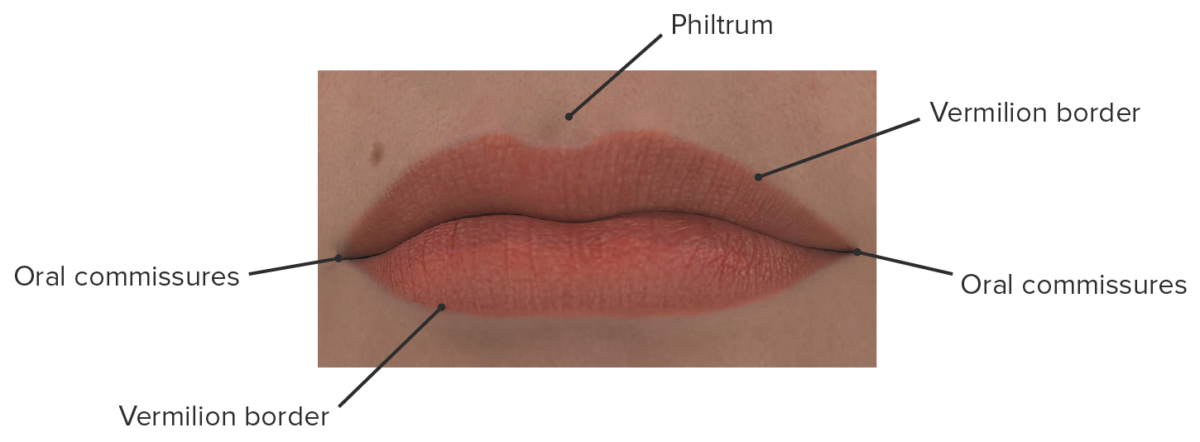
Image of the lips, highlighting the philtrum, oral commissures, and vermilion border
Image: “3drender” by DMCA. License: Public Domain, edited by Lecturio.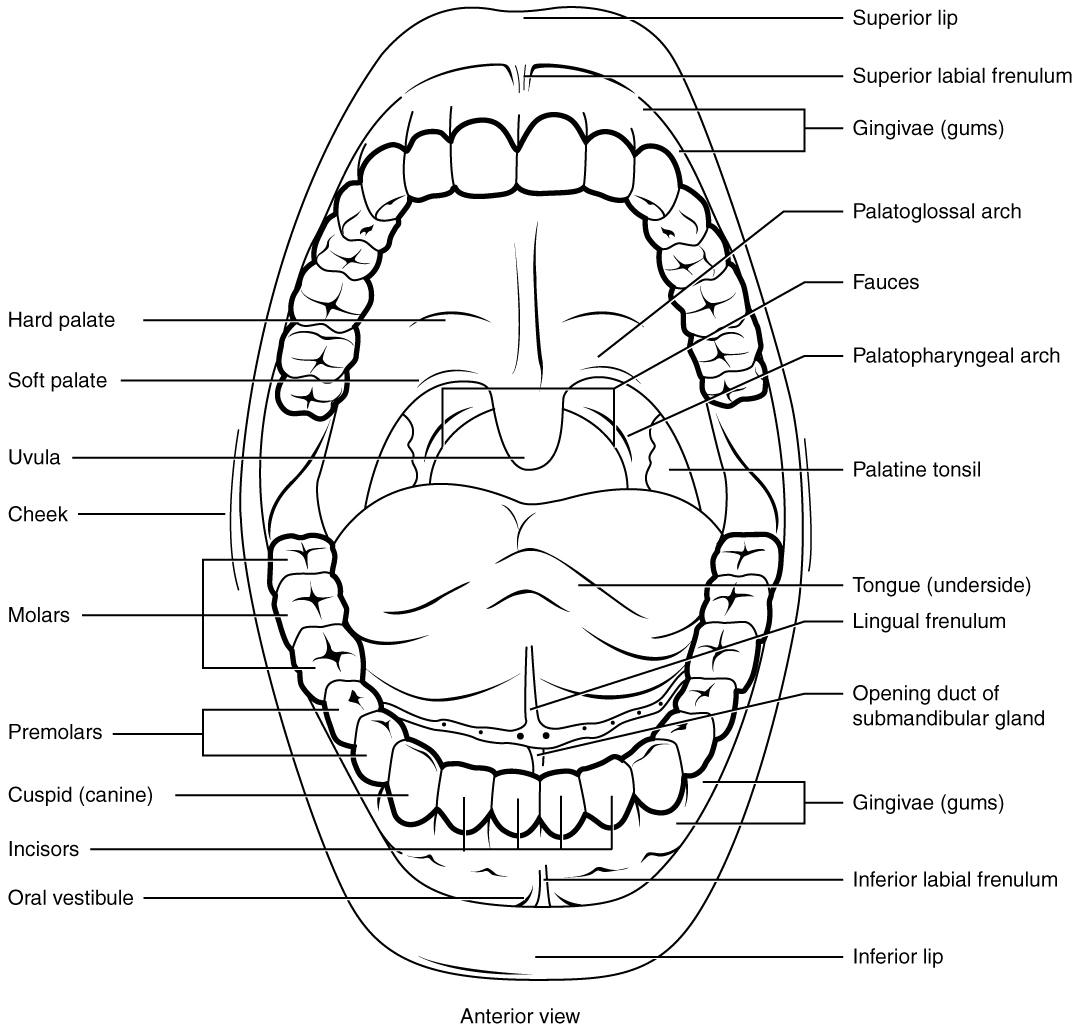
Diagram of the mouth and lips showing their different components and landmarks
Image: “The mouth includes the lips, tongue, palate, gums, and teeth” by OpenStax College. License: CC BY 4.0Numerous muscles are responsible for movement of the lips.
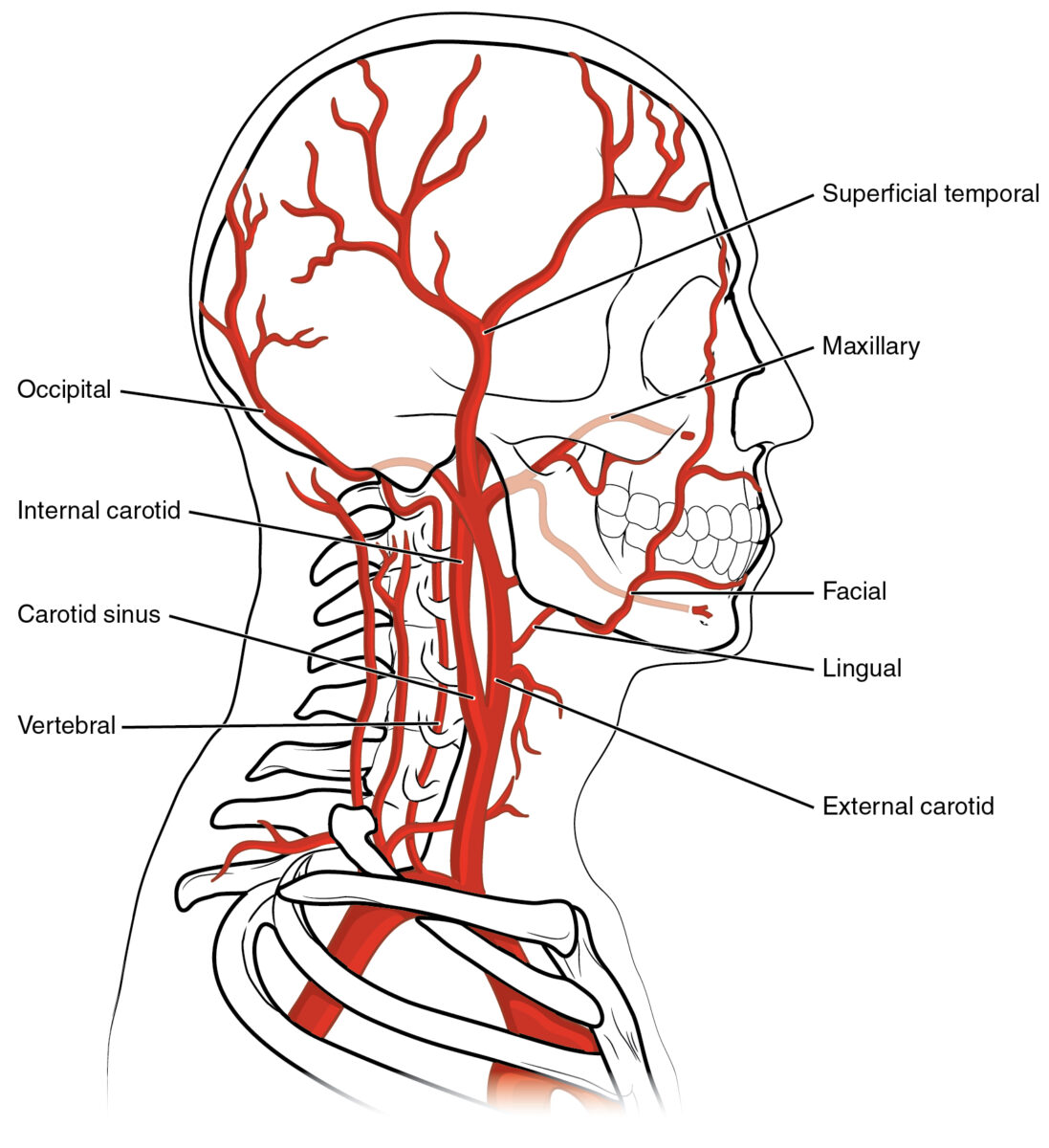
Facial artery branching off the external carotid artery
Image: “2122 Common Carotid Artery” by OpenStax College. License: CC BY 3.0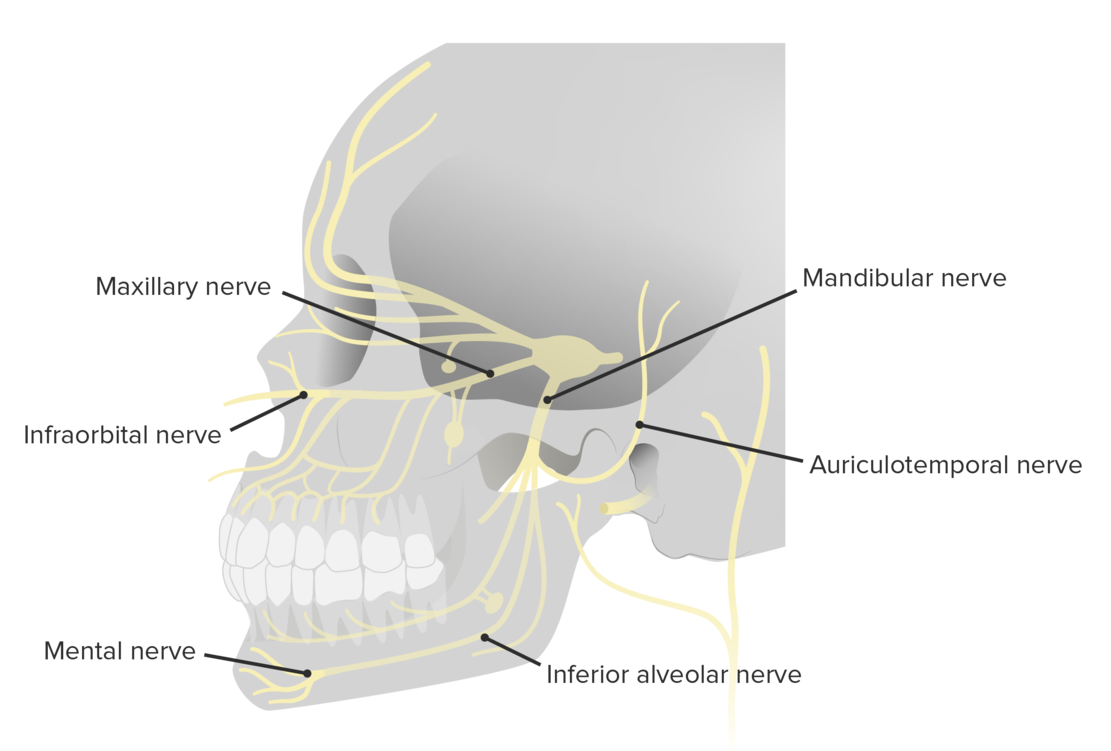
Lateral view of the branching pattern of the trigeminal nerve showing the infraorbital and mental nerves
Image by Lecturio.The tongue is a muscular projection that assists with chewing, speech, and taste. The tongue has variable Variable Variables represent information about something that can change. The design of the measurement scales, or of the methods for obtaining information, will determine the data gathered and the characteristics of that data. As a result, a variable can be qualitative or quantitative, and may be further classified into subgroups. Types of Variables innervation depending on which section is of interest and is supplied by a branch of the external carotid artery External carotid artery Branch of the common carotid artery which supplies the exterior of the head, the face, and the greater part of the neck. Carotid Arterial System: Anatomy.
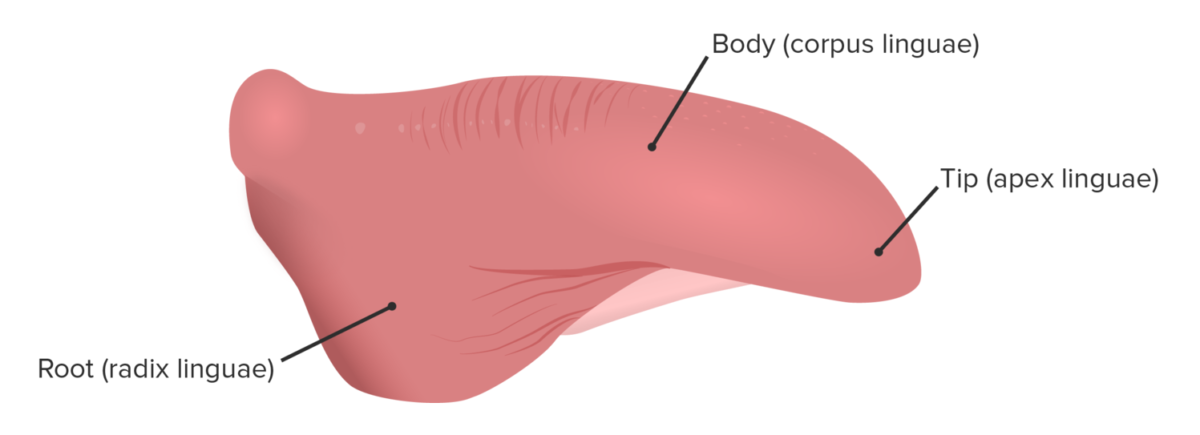
Gross anatomy of the tongue
Image by Lecturio.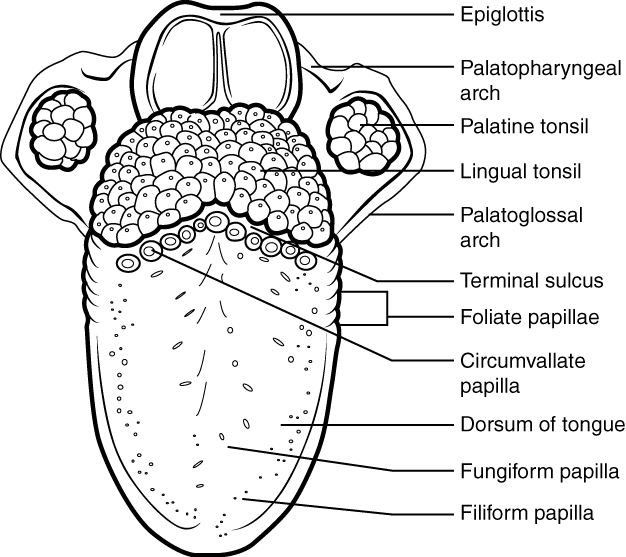
The tongue and its anatomical landmarks
Image: “This superior view of the tongue shows the locations and types of lingual papillae” by OpenStax College. License: CC BY 4.0The tongue is moved by extrinsic and intrinsic muscles. Extrinsic muscles connect the tongue to surrounding structures, while intrinsic muscles do not have a bony origin or insertion.
| Muscle | Origin | Insertion | Function |
|---|---|---|---|
| Genioglossus | Mental spine Spine The human spine, or vertebral column, is the most important anatomical and functional axis of the human body. It consists of 7 cervical vertebrae, 12 thoracic vertebrae, and 5 lumbar vertebrae and is limited cranially by the skull and caudally by the sacrum. Vertebral Column: Anatomy of mandible Mandible The largest and strongest bone of the face constituting the lower jaw. It supports the lower teeth. Jaw and Temporomandibular Joint: Anatomy | Body of hyoid |
|
| Hyoglossus | Hyoid bone Bone Bone is a compact type of hardened connective tissue composed of bone cells, membranes, an extracellular mineralized matrix, and central bone marrow. The 2 primary types of bone are compact and spongy. Bones: Structure and Types | Side of the tongue |
|
| Styloglossus | Styloid process of temporal bone Temporal bone Either of a pair of compound bones forming the lateral (left and right) surfaces and base of the skull which contains the organs of hearing. It is a large bone formed by the fusion of parts: the squamous (the flattened anterior-superior part), the tympanic (the curved anterior-inferior part), the mastoid (the irregular posterior portion), and the petrous (the part at the base of the skull). Jaw and Temporomandibular Joint: Anatomy | Tip and sides of tongue |
|
| Palatoglossus | Palatine aponeurosis | Tongue | Raises the posterior part of the tongue |
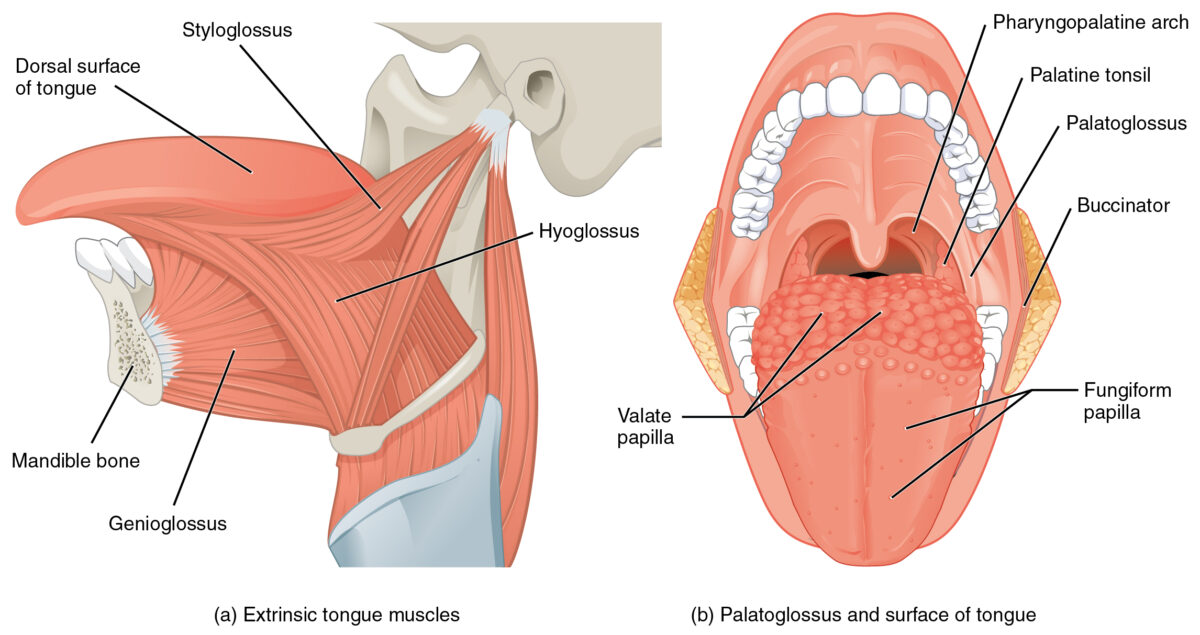
Extrinsic muscles of the tongue
Image: “1109 Muscles that Move the Tongue” by OpenStax. License: CC BY 3.0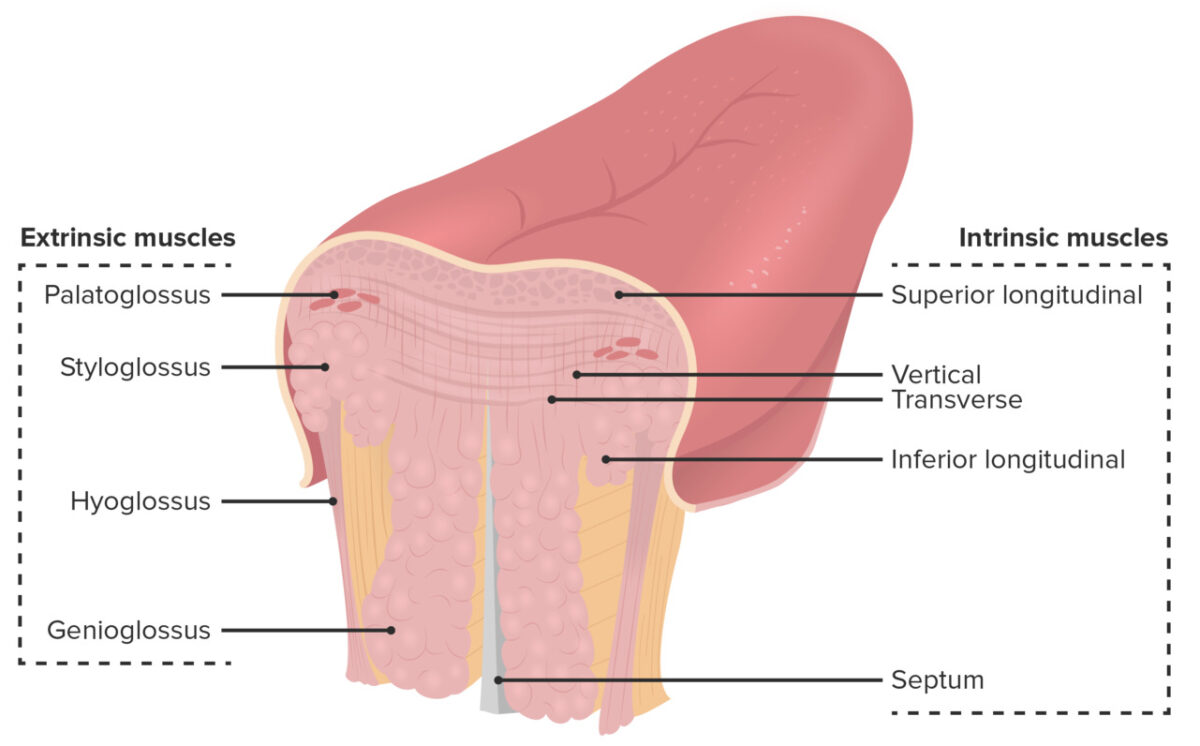
Cross-sectional drawing showing the various muscular layers of the tongue
Image by Lecturio.The microscopic anatomy of the lips consists primarily of 3 layers: the pars cutanea, pars intermedia, and pars mucosa. The pars cutanea is the outer layer of skin Skin The skin, also referred to as the integumentary system, is the largest organ of the body. The skin is primarily composed of the epidermis (outer layer) and dermis (deep layer). The epidermis is primarily composed of keratinocytes that undergo rapid turnover, while the dermis contains dense layers of connective tissue. Skin: Structure and Functions, the pars intermedia is the pink portion of the lip, and the pars mucosa is inside the lip. These layers contain varying amounts of skeletal muscle.
The microscopic anatomy of the tongue comprises squamous epithelium Epithelium The epithelium is a complex of specialized cellular organizations arranged into sheets and lining cavities and covering the surfaces of the body. The cells exhibit polarity, having an apical and a basal pole. Structures important for the epithelial integrity and function involve the basement membrane, the semipermeable sheet on which the cells rest, and interdigitations, as well as cellular junctions. Surface Epithelium: Histology and nerve cells, which assist in the highly variable Variable Variables represent information about something that can change. The design of the measurement scales, or of the methods for obtaining information, will determine the data gathered and the characteristics of that data. As a result, a variable can be qualitative or quantitative, and may be further classified into subgroups. Types of Variables functions of the organ.
| Papillae | Characteristics |
|---|---|
| Filiform papillae (thread-like) |
|
| Conic papillae (cone-shaped) | Similar to the filiform papillae |
| Fungiform papillae (mushroom-shaped) |
|
| Foliate papillae (leaf-shaped) | Large amount of taste buds |
| Circumvallate papillae (dome-shaped) |
|